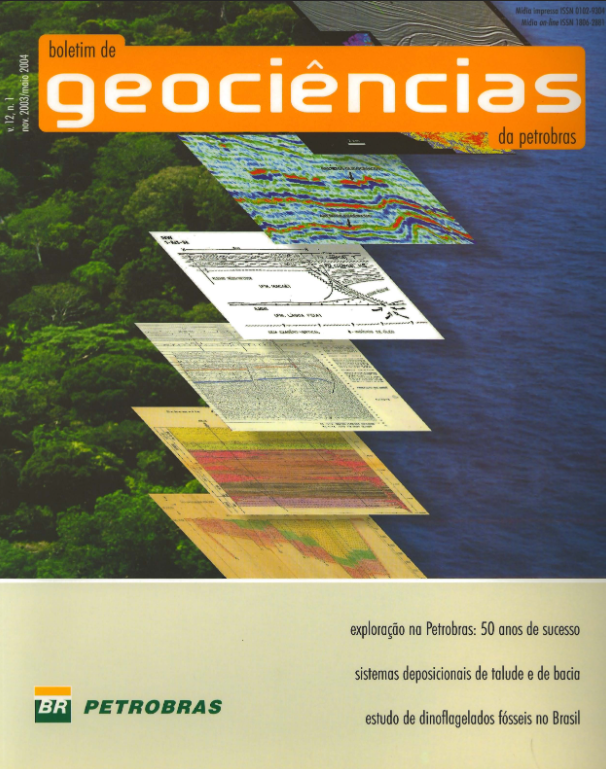Retrospective of fossil dinoflagellate studies in Brazil: their relationship with the evolution of petroleum exploration in the Cretaceous of continental margin basins
Keywords:
Cretaceous, Brazil, dinoflagellates, palynologyAbstract
Palynostratigraphy of the Brazilian Cretaceous was mainly based on terrestrial palynomorphs (mostly spores and pollen grains) until the end of the nineteen eighties. This was so because, for several decades, petroleum exploration in Brazil was focused on the essentially nonmarine sediments of the Recôncavo Basin. During the nineteen sixties, Petrobras extended oil exploration to the Brazilian continental shelf (offshore areas). Nevertheless, at that time the company did not invest immediately in marine palynostratigraphy, because it was believed that biostratigraphic schemes based on foraminifers and calcareous nannofossils would be more efficient than palynology in marine sequences. This belief changed only in the seventies, when commercial oil reservoirs were discovered in the Campos Basin, within the Macaé Formation, a rock unit deposited in a carbonate shelf environment. Its environmental conditions were certainly hostile to the develop-ment and post-mortem preservation of foraminifers and calcareous nannofossil producing algae. As a result, no more than two or three biozones could be identified in the Macaé carbonate section on the basis of such organisms. Besides, carbonate shelf sediments, subject to only minor terrigenous input, are usually poor in terrestrial palynomorphs. On the other hand, the palynological content of some Macaé strata consists mainly (up to 100%) of such marine palynomorphs as dinoflagellates, acritarchs e palynoforaminifers. Consequently, Petrobras recognized the importance of developing a zonal framework based on these organisms. The first Cretaceous dinoflagellate zonation in Brazil was erected in 1976, and since the nineteen eighties, marine Cretaceous palynostratigraphy has made significant advances mainly due to the use of dinoflagellates. Hundreds of Cretaceous dinoflagellate index species have been introduced into Petrobras databanks, becom-ingwidely applicable to the biostratigraphy of all Brazilian continental margin basins.
Downloads
Published
Issue
Section
License
This license enables reusers to distribute, remix, adapt, and build upon the material in any medium or format, so long as attribution is given to the creator. The license allows for commercial use.



